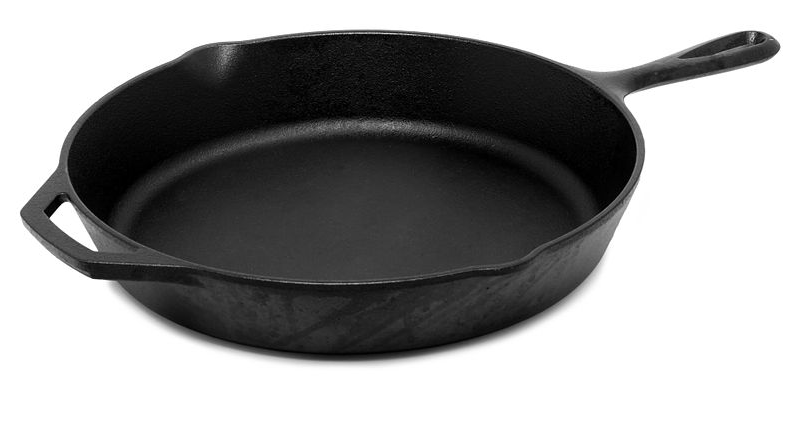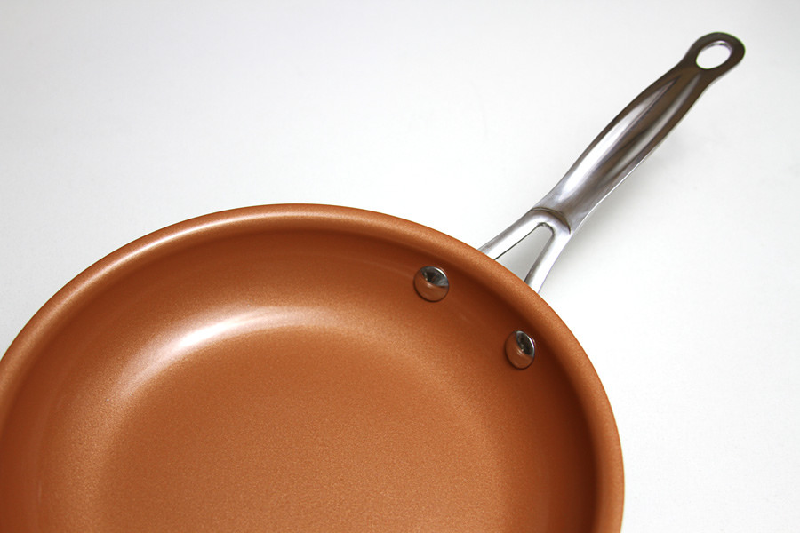It’s a good thing to be concerned with type of food you’re eating. However, you should also be putting thought into what you’re using to cook your food. While you can use coconut oil on pans to keep food from sticking, many popular cookware brands are now nonstick. But they are also known to contain a chemical that is linked to major health problems, such as cancer. There are, however, alternatives you can use. These alternatives are nontoxic, and some even offer additional health benefits. Learn more about nontoxic cookware options by reading below!
Here are 4 nontoxic cookware you should try:
1. Cast Iron

Cast iron is one of the oldest nontoxic cookware options available. Furthermore, it retains heat well so you can use a lower setting. This helps food from sticking.
In addition, when you eat food cooked in a cast iron pot or pan, you consume bits of iron. This is a great way to treat an iron deficiency. However, those who have too high of iron stores should avoid cast iron cookware.
Just be sure you season your cast iron piece after cleaning it. This will help maintain an optimal cooking surface. To do this, apply a light coating of a high smoke point oil, such as avocado oil. Do this when it’s clean and ideally somewhat warm.
2. Stainless Steel
Also on the list of safe cookware is stainless steel. Just be sure you’re buying cookware that is made from a food-grade version of stainless steel. You might see numbers such as 304, 316 and 430. These are all food-grade. Furthermore, numbers such as 18/8, 18/10 or 18/0 indicate how much chromium and nickel, respectively, the product contains. Keep the second number in mind if you are concerned about the leaching of nickel.
However, abrasive cleaning can lead to damage to the lining. When this occurs, it is no longer a nontoxic cookware piece. This is due to the leaching of metals. Take care in how you clean your stainless steel nontoxic cookware, and throw them out once they exhibit this damage.
3. Glass
Next on the list of nontoxic cookware is glass, which is environmentally-friendly as well as very durable. Glass containers are also a healthier option than their plastic counterparts for storing foods. This is because plastic containers can contain BPA.
4. Copper

When it comes to nontoxic cookware, cooper is about middle of the road. It can be safer than other options, however, it can also lead to an overconsumption of copper. Still, some diets are low in copper, making this nontoxic cookware, in those instances, a good option.
Commonly, you will find copper cookware that is copper on the outside and non-reactive stainless steel on the inside. Copper is great for conducting heat, so this option gives you the best of both materials. However, older copper cookware is not nontoxic cookware. It can have tin or nickel as a coating and should not be used for cooking.
Now that you have a good idea of some nontoxic cookware options, you might also be interested to learn about the different ways in which their toxic counterparts can affect your health.
Here are 6 scary side effects of toxic cookware:
1. Child Developmental Delays
According to a study conducted by UCLA, prenatal exposure to PFOA and PFOS has been connected to developmental delays in infants. The study discovered that mothers with higher levels of PFOAs in their blood have toddlers and babies who are less likely to reach developmental milestones early. (1)
2. High Cholesterol
Research indicates that chemicals used to make nonstick cookware may lead to some concerning health issues. High cholesterol, for example, is linked to these chemicals. Twelve-thousand children in Ohio and West Virginia were tested for PFOA and PFOS in a study. Researchers discovered that children with the highest levels of these chemicals were more likely to have abnormally high levels of total cholesterol and LDL, or bad cholesterol.
3. Neurotoxicity
Aluminum can conduct heat quickly, and as such, is often used in cookware. However, it can leach very easily, especially when it’s exposed to heat and acidic foods. And consuming large amounts of processed foods that contain aluminum additives or frequently cooking acidic foods in aluminum pots may expose a person to higher levels of aluminum. (2)
Aluminum is linked to Alzheimer’s disease, as well. And this has led to several studies that examined a potential connection between aluminum and neurotoxicity. Because of this, it’s best to avoid aluminum cookware altogether. (3)
4. Thyroid Issues, Liver Inflammation and Weakened Immune System
It seems these toxic chemicals found in traditional cookware wreak havoc on your entire body, in fact. For example, they can lead to smaller birth weight, elevated cholesterol, unhealthy thyroid hormone levels, liver inflammation and weaker immunity. (4)
5. Allergies and Flu-Like Symptoms
Even the fumes these traditional cookware items create can damage your health. These fumes can lead to allergies as well as flu-like symptoms. Yikes!
6. Cancer
But wait, it gets worse. PFOA, according to scientific research, can also possibly cause cancer. For example, studies show that PFOA increases the risk of certain tumors of the liver, testicles, mammary glands and pancreas. This study was conducted on animals, however, many animal studies are good indicators of which exposures cause cancer in people. (5)


